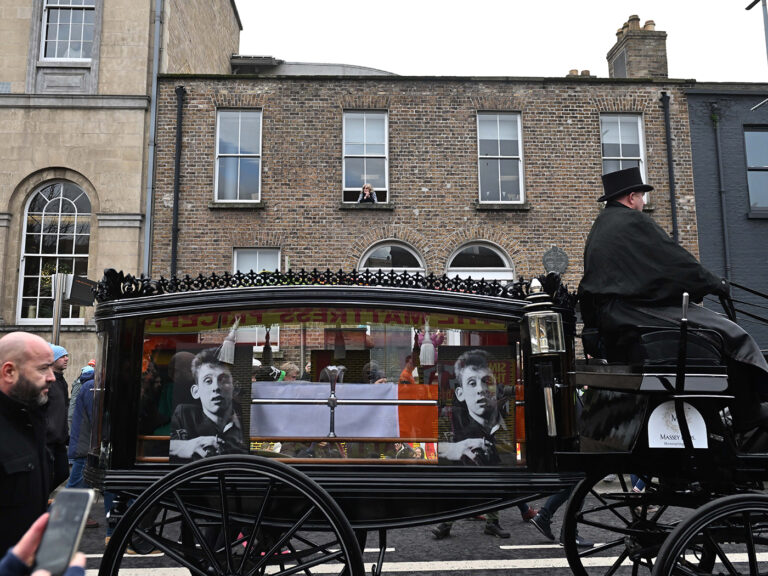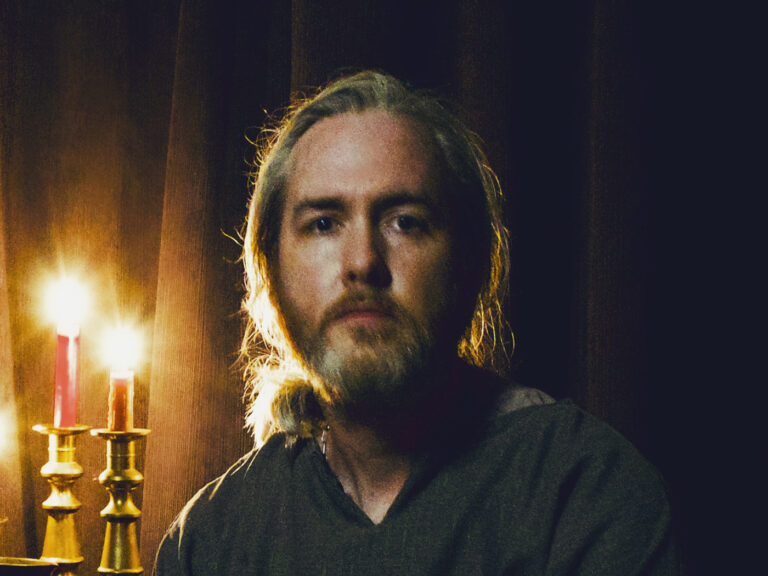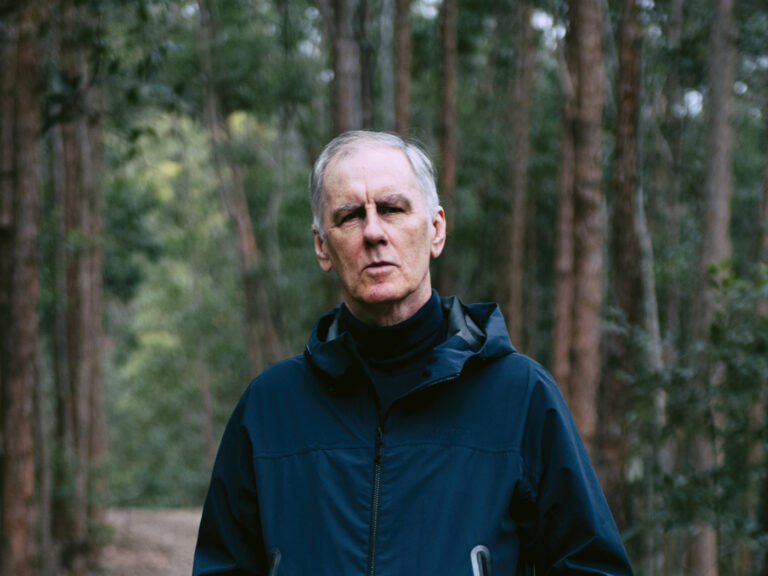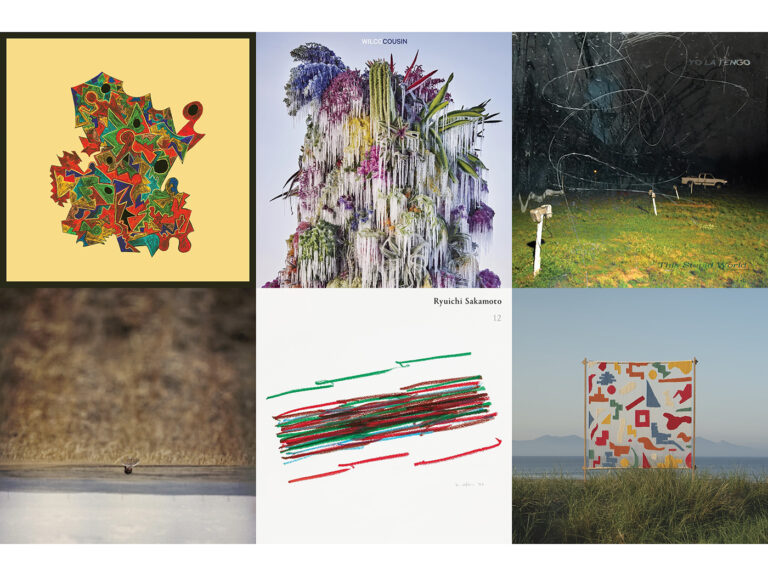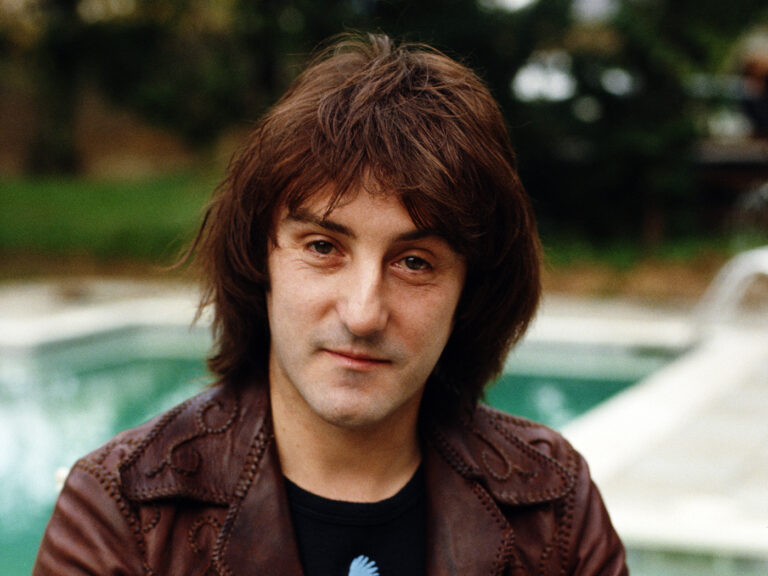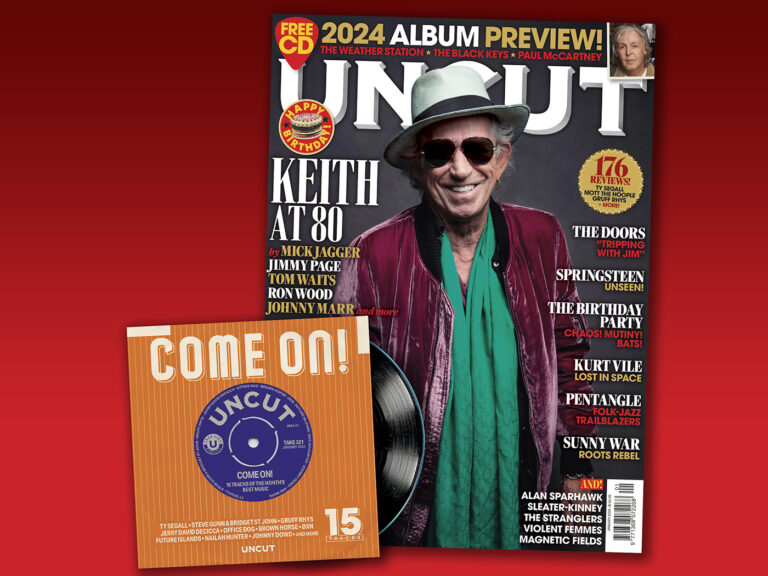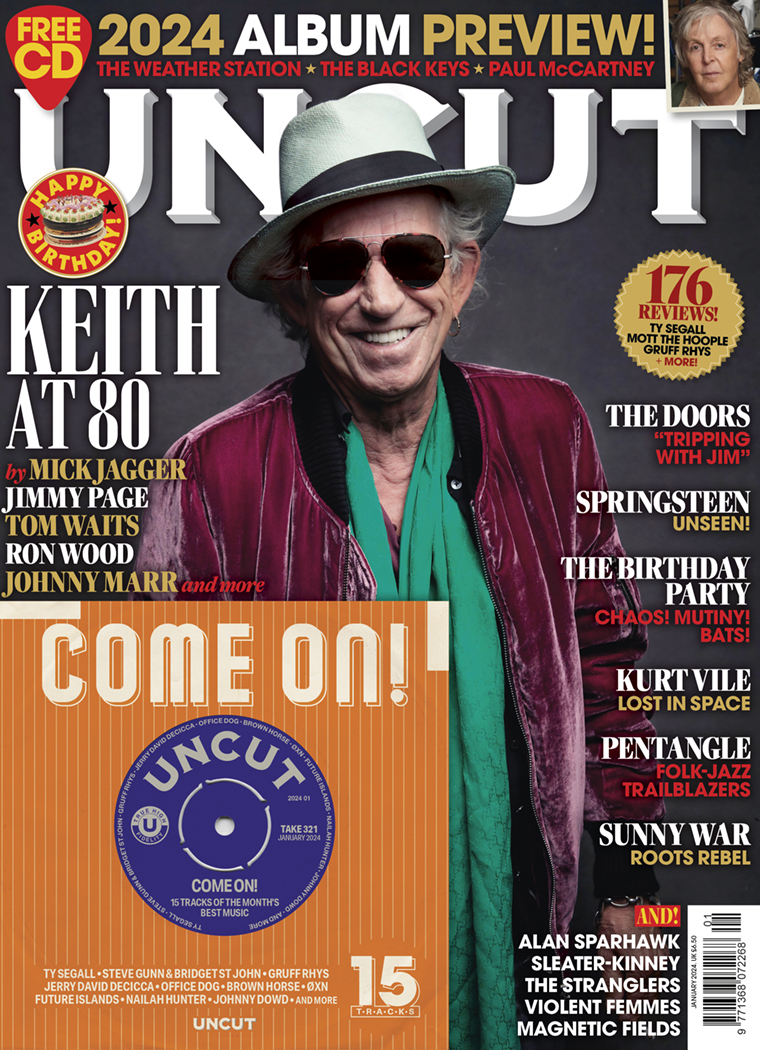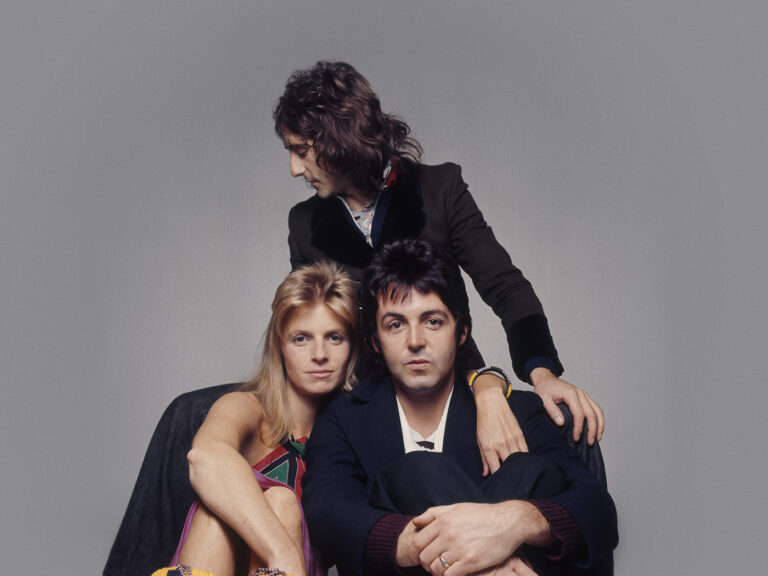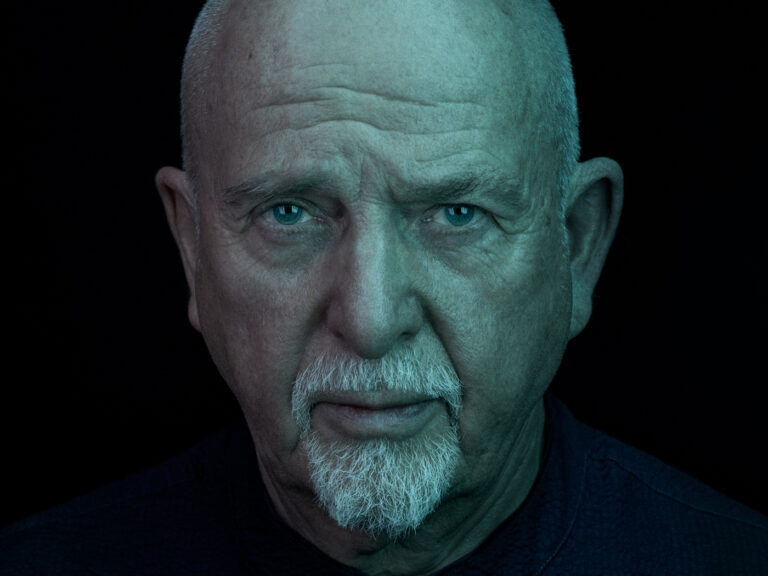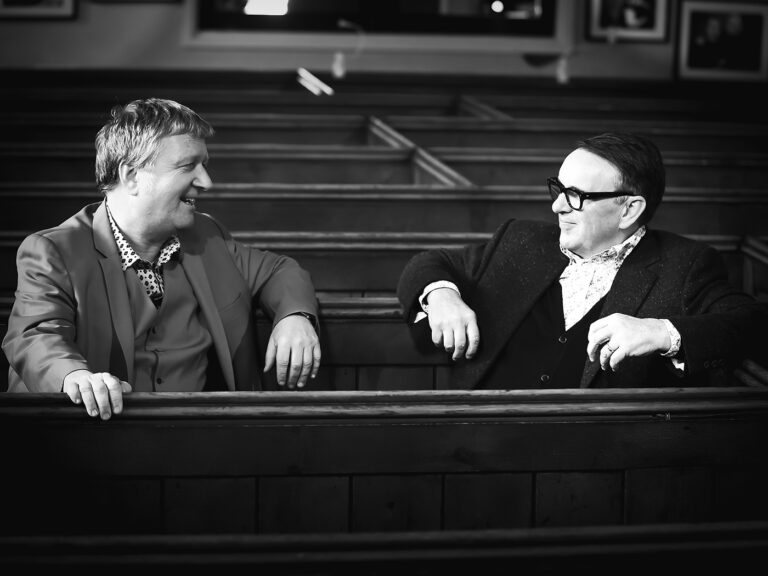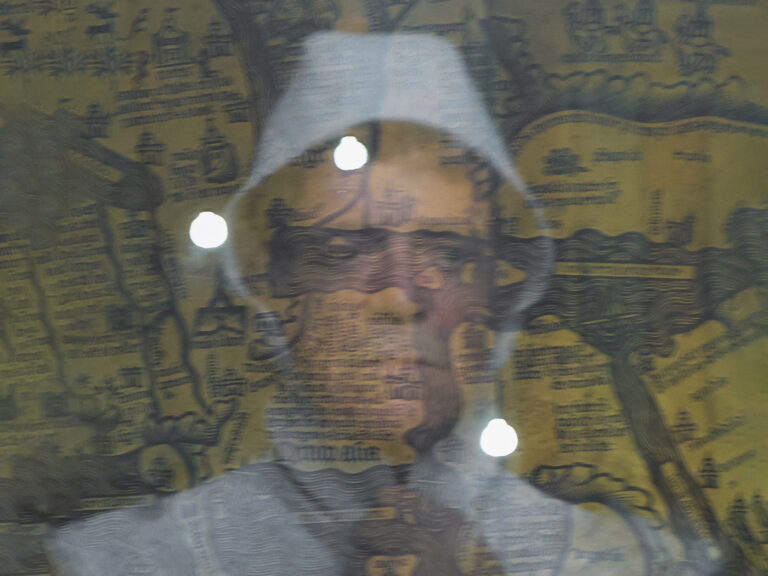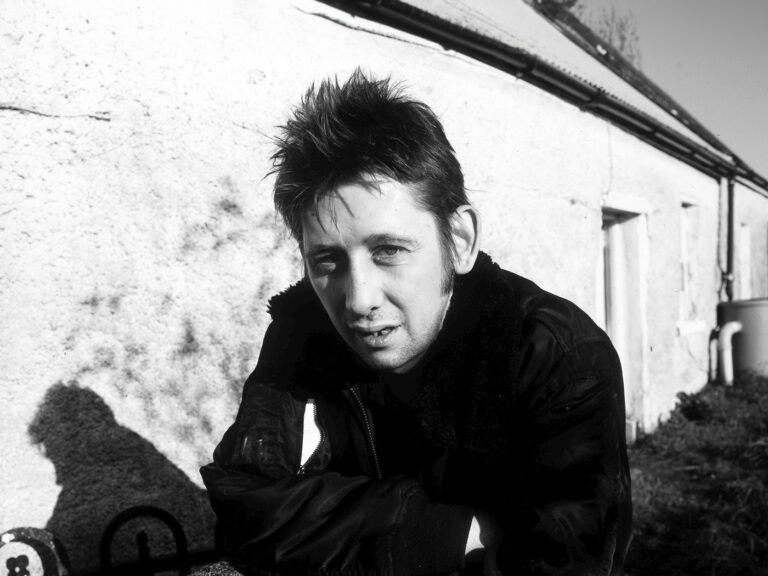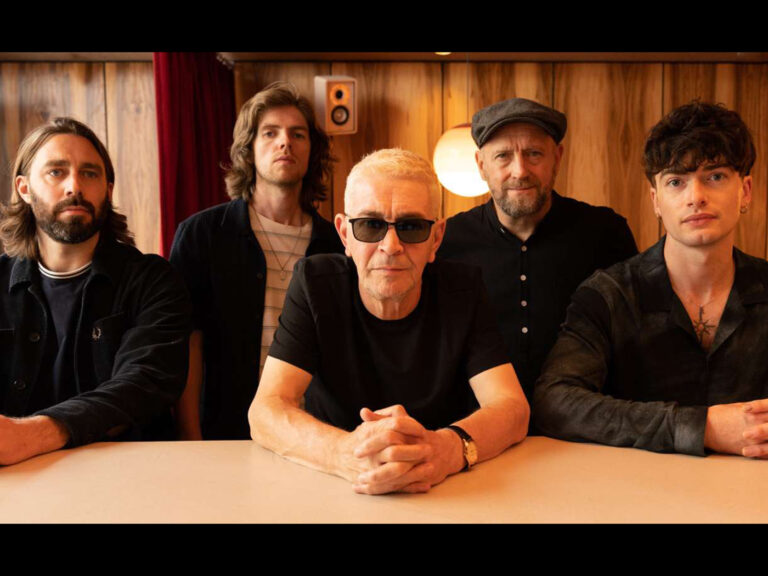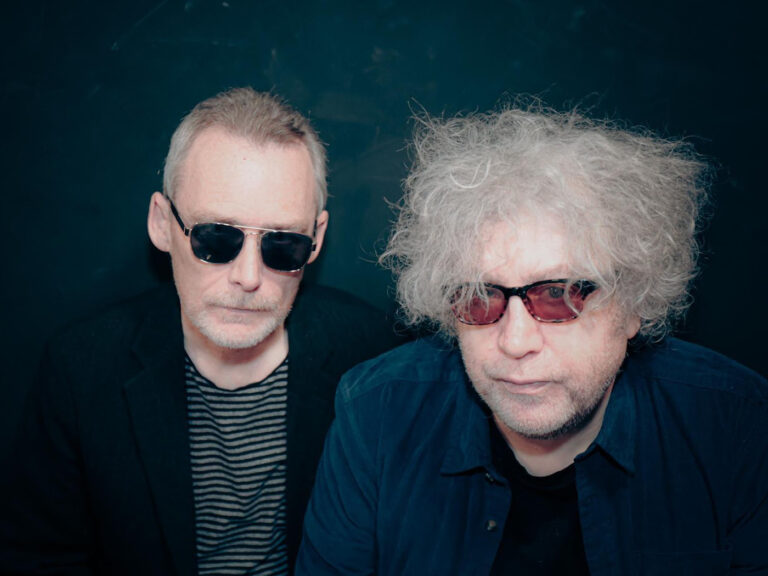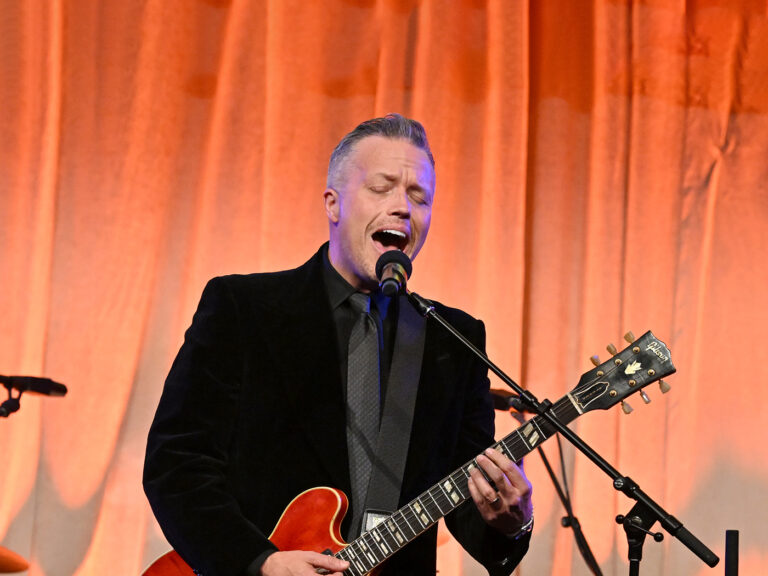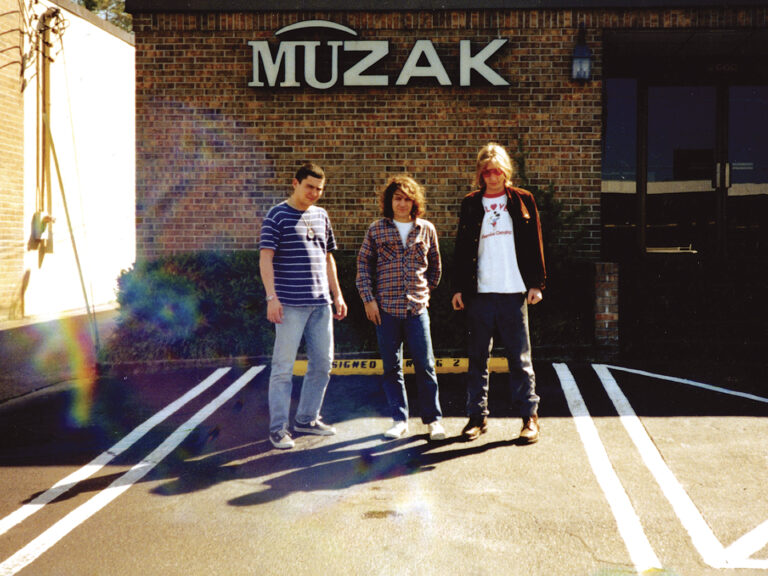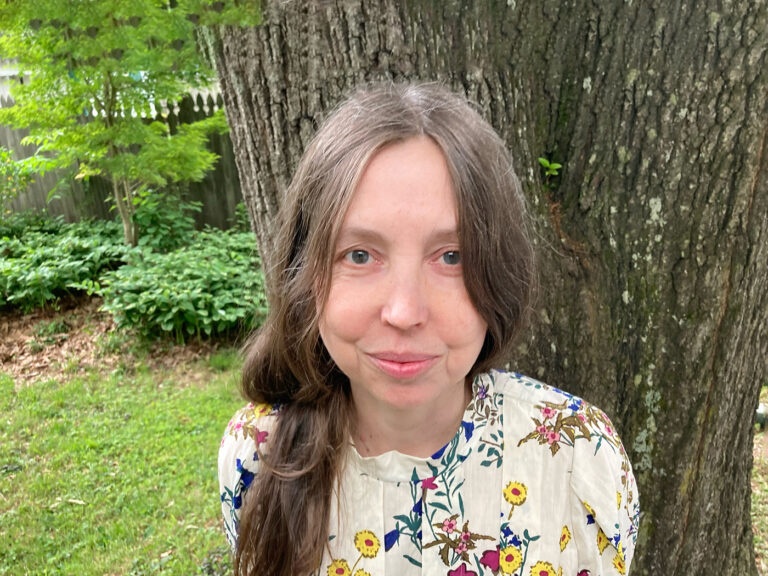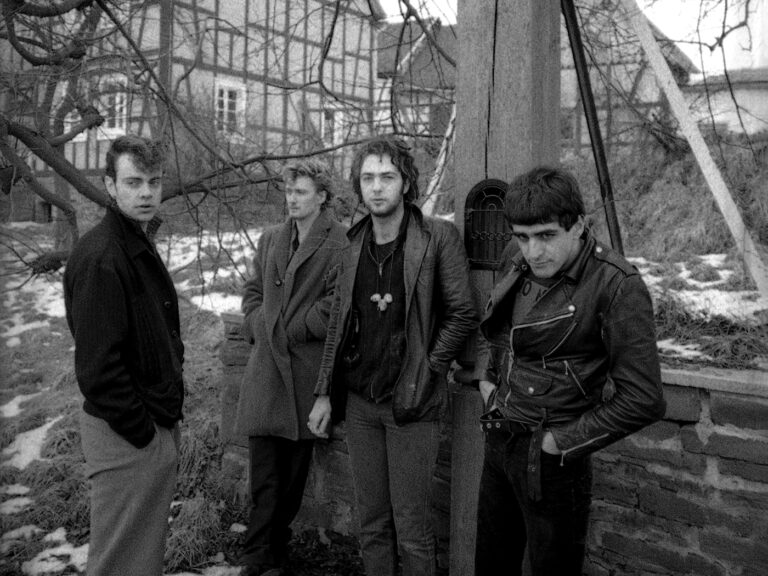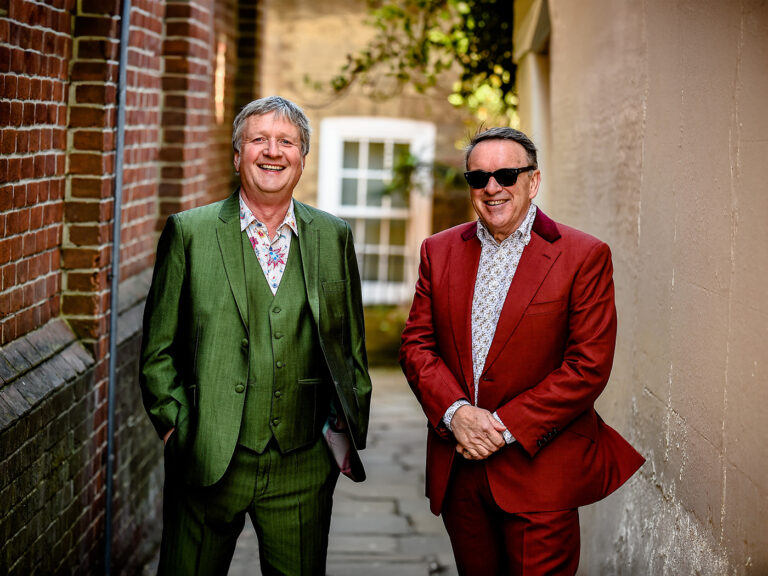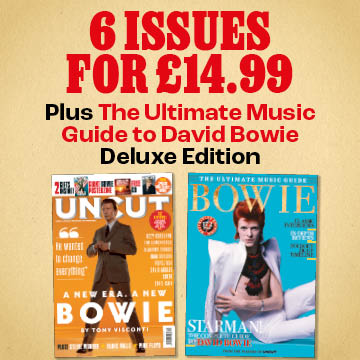This article originally appeared in Uncut Take 310 (March 2023)
While Killing Joke’s “Wardance” – an ominous groove warning of nuclear destruction – makes its point in a couple of unforgettable minutes, a conversation with singer Jaz Coleman takes many twists. Coleman, who is calling from Prague where he’s writing a symphony, peers intensely at the screen while delivering an erudite monologue that takes in topics as diverse as archaeologist Sir Mortimer Wheeler’s excavation of Mohenjo Daro, the World Economic Forum, Roger Waters, Indian epic Mahabharata, digital enslavement, the Taurid meteor system, Plato, Mussolini and nuclear annihilation. “And that brings us to the significance of ‘Wardance’,” he concludes with a demonic grin.
Coleman formed Killing Joke with guitarist Kevin “Geordie” Walker, bassist Martin “Youth” Glover and drummer Big Paul Ferguson in the squats of West London at the end of the 1970s. “Wardance” emerged early on as an example of the band’s ability to match propulsive energy, heavy vibes and a fierce groove with a singalong chorus. Selected as a single and recorded at Gooseberry Studios with Mark Lusardi, it was released in February 1980, but the band weren’t entirely satisfied so had another go when they recorded their debut album at the Marquee Studio with engineer Phil Harding, who later worked with Stock, Aitken & Waterman. This time Jaz Coleman’s vocals were heavily distorted, and the song was given a more portentous tone in keeping with the album’s mood and the tune’s apocalyptic lyrics. It became a mainstay of the set and remains so today.
Killing Joke have come a long way from those Ladbroke Grove days, but they’ve never been ones to compromise: “Wardance” is now heavier and more intense than ever. “‘Wardance’ became a big anthem quite quickly,” says Youth. “It wasn’t an end-of-set song like ‘Pssyche’, but it’s what gave us this reputation of having this bludgeoning assault. We were teenagers when we did this. We didn’t know what we were doing, it was intuitive. I am very proud of how those songs have become part of the vocabulary of resistance to autonomous 1984 governments that feel all-powerful and justified at keeping the public in chains. When we started, people were shocked. They didn’t know how to react. But now they get it, and they know what it means and what we represent.”
JAZ COLEMAN: I have this lasting memory of Youth at 8 Templeton Place, his palatial apartment in Earls Court. He was 18 and was playing the bassline of “Wardance”. I love that bassline and every time I hear it, it takes me back to that time.
YOUTH: I am still staggered at the bassline on “Wardance”. I shouldn’t be blowing my own trumpet, but it’s incredible, the sound of it, the dirtiness. There’s nothing like it, even today.
COLEMAN: When we formed the band, everybody believed we wouldn’t last long. Nuclear war would occur sooner rather than later.
PAUL FERGUSON: We were squatting in a depressed area of London in Maggie Thatcher’s Britain. The Cold War was in full effect and the future looked very bleak indeed.
YOUTH: We spent the first few months rehearsing in Cheltenham. At the end, we had a 20-minute set and I am pretty sure “Wardance” was in there. Once we started gigging, we rehearsed at the People’s Hall on Latimer Road where we shared a rehearsal room with Motörhead.
FERGUSON: We rehearsed in a couple of studios. One in a basement off Portobello Road owned by Ace, who had a hit with the song “How Long (Has This Been Going On)”. The other was Ear Studio, in a rundown neighbourhood that the locals took to calling The People’s Republic of Frestonia. They made an attempt to separate themselves from the UK by filing a charter with the UN.
COLEMAN: The Clash were upstairs and we were downstairs. Paul and I would get our lyrics out, Geordie would have some riffs and we’d rehearse three or four times a week, more sometimes.
GEORDIE: It’s a collaboration, but it begins with the riffs. It has to. We don’t do it the other way. Everybody contributes, and that pushed us. We had a rule: don’t criticise an idea if you can’t put a better one on the table.
YOUTH: Every time we came to rehearse, we’d hear Motörhead finishing up and this enormous filthy bass. I wanted to get my bass as loud as Lemmy. The first time I took mushrooms we came out rehearsal and walked down to the Nashville to see The Cramps, which was an amazing introduction to psychedelia. They didn’t have a bass player, of course – just a dirty fuzzy guitar, but it was so loud you didn’t notice. There was an element of that Cramps/Motörhead in “Wardance” basically. I was trying to do what they were doing in a different way.
COLEMAN: I don’t really remember about the moments those lyrics appeared. What Big Paul and I normally do is agree on a theme and then go and write independently and synthesise. I like doing that because that’s what being in a band is about. It’s total collaboration. You have to sacrifice your ego if you are going to make it work properly.
YOUTH: We recorded it at Gooseberry with Mark Lusardi, who had been trained by Dennis Bovell. First we did the EP “Turn To Red” and we went back for “Wardance”. On things like “Nervous System” we were experimenting with funk and disco, and that morphed into a harder edge for “Wardance”, which was more of a pagan thunder tribal stomp.
COLEMAN: We weren’t happy with the first recording, to be honest.
YOUTH: We couldn’t get the vocal sound right. We distorted it but it kept sounding wrong.
FERGUSON: We recorded “Wardance” three times. Once as a single, once at the Marquee studios and then for John Peel. They are each radically different-sounding recordings, although the structure itself didn’t change. We always had difficulty placing the bass riff in the mix of the choruses with the floor toms I was playing.
YOUTH: The single is now my favourite version.
FERGUSON: The “Wardance” single, more up-tempo, is perhaps a more exciting take on the song. The drums are more compressed, Youth’s bass guitar more present, Geordie’s buzzsaw guitar cutting away, Jaz sings with more snark and my vocal is forward in the crowd choruses.
YOUTH: When we came to the album, we recorded the song again at the Marquee with Phil Harding.
HARDING: The band were producing themselves, so I kept my suggestions to the technical side. If there was any instruction, it was to capture the rawness. Once we got a balance and everybody was comfortable it really did flow. But it was chaotic because there was no producer, so nobody would take the lead.
COLEMAN: Phil suffered terribly. He was a fresh-faced engineer right at the start of his career and a very good referee for that first record.
YOUTH: Phil was great. We had distinct respect because he was
the engineer. We wouldn’t give Phil any crap, we treated him as a professional.
HARDING: I’d have one or other of them screaming at me from the other side of the mixing desk. They’d stand opposite me, glaring and shouting about the mix during a full-volume playback. That happened on pretty much every track.
COLEMAN: We were all smoking vast amounts of hashish and in a state of complete paranoia and violence would break out frequently.
HARDING: I’d come across bongs before but never one like this Caribbean one, a massive jug that sat on the floor. I knew it was dangerous for me to get anywhere near it and that became a running joke until we were having the playback and Youth talked me into finally having a blast.
YOUTH: I remember Paul punching the window in the studio toilet. He was struggling to get the drums and was so frustrated, he punched a window. I also remember him punching one of the managers one day because he was late bringing the weed. There was an aura of violence, but we stopped short of punching each other – that came later.
HARDING: Paul was a real softy underneath it all and I have total respect for the way he played. “Wardance” is a great example of his talent, because I love a drum rhythm based around tom-toms rather than snare. Geordie was the same. He must have spent hours getting his sound together, impeccable matching of guitar and amp settings.
YOUTH: Again with “Wardance” we weren’t happy with the vocal sound. We kept going round in circles. We wanted a really fucked-up vocal sound and there was nothing on record that we could refer to. It seems churlish to say we weren’t happy as that vocal has influenced so many singers, but I still think we didn’t quite get it.
HARDING: Jaz was the most difficult to please. I’d had seven years’ training in not to distort things and now I had Jaz screaming at me to distort his vocal. What we did to get somewhere near what Jaz was describing is that it’s not so much distorted as going through an outboard effect called an Eventide Harmoniser. I am pretty sure the vocal was processed through the Eventide with this modulator effect and distorted through the box. It was all about the intensity that Jaz wanted to get across.
FERGUSON: The first album was ground-breaking for us because we’d never heard a record like it. It had a weird dissonance. It sounded heavy but actually it wasn’t, when you listened more carefully.
YOUTH: Geordie and I get off on ’60s pop songwriting and production style. That came out on things like “Wardance”. The chorus is pure pop. I still try and push for that as I love that element and the counterpoint with the dirty energy of the verses.
HARDING: They were always more commercial than people imagine. “Wardance” is a stand-out track as it’s a little more experimental. It has those effects at the front, and the echo and backing vocals on the chorus. That doesn’t happen elsewhere on the first album except on “Change”, where we doubled Geordie’s guitar.
GEORDIE: My favourite gig was the CND rally at Trafalgar Square in 1980. Jaz told them, “Margaret Thatcher has bought all these Cruise missiles and all you can do is stand there with a fucking placard. You deserve what you are going to get. This one’s called ‘Wardance’.” Then it kicked off. I’ve got my suspicion that’s why we never did Glastonbury.
YOUTH: I’m sure Jaz and Paul were writing about nuclear war and the prevailing paranoia of existential destruction – we all thought about that all the time and it’s what give us a big creative surge. But for me it’s a reference to the wardance of the Native American Indians as a way of banding together and resisting the encroachment of their land by colonial forces.
COLEMAN: Resist. “Wardance” is saying resist, resist, resist.
YOUTH: I’ve been told it was used in the first Iraq war by soldiers going into battle. That was weird for us because it’s an anti-war song.
COLEMAN: There are two things that separate Killing Joke and our generation from other musicians. The first is that we are probably the last generation that believe you can change things through music. That counterculture aspect has always been there. The second is that our entire existence has been lived under the stress of total extinction. When we perform “Wardance”, it seems to have more meaning, more intensity, more relevance and [be] more menacing than ever before.
FERGUSON: “Wardance” is still very much part of our live repertoire and I still love playing the song.
YOUTH: It’s great playing at the Royal Albert Hall. We’ve outgrown our detractors and are able to appropriate the Albert Hall to make our noise. And why not?
COLEMAN: We’re doing both LPs at the Albert Hall and I’m looking forward to it as both albums seem to suit the period we’re living through. They are the ultimate Cold War-turning-hot records. We are right here, 30 seconds to midnight on the Doomsday Clock and “Wardance” is more relevant than ever because it’s about how we psychologically deal with living in this perpetual tyranny and fear of extinction.


